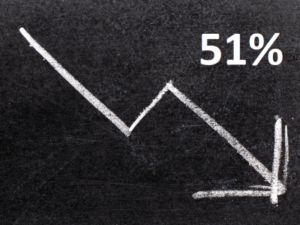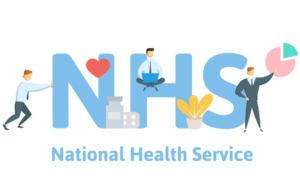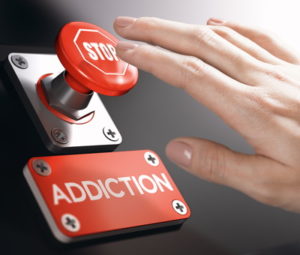NHS Release New Figures On Problem Gambling Showing Overall Drop In Numbers
 The latest Health Survey for England has been released and they show that the overall percentage of people who gambled in 2018 dropped to 51%. In a sign of good news for the gambling industry, which has been under intense scrutiny and has suffered a lot of criticism in recent times, both measures used to record problem gambling show the rates to be down.
The latest Health Survey for England has been released and they show that the overall percentage of people who gambled in 2018 dropped to 51%. In a sign of good news for the gambling industry, which has been under intense scrutiny and has suffered a lot of criticism in recent times, both measures used to record problem gambling show the rates to be down.
There are two main measures that are used to measure problem gambling known as DSM-IV and PGSI. Under the PGSI model the rate stands at 0.4%, whilst for the DSM-IV model it’s 0.5%. That means that both models have the rate of problem gambling as lower than the generally accepted level of 0.7%. In both cases it was found that men are more likely to be problem gamblers than women.
The Importance Of The Survey To The Gambling Industry
 It would be easy to dismiss the findings of the Health Survey as being unimportant, especially considering the rate at which the gambling industry has come under fire from politicians and help groups in recent times. Even looking at this research some newspapers decided to lead with the more critical view that ‘more than half of UK adults now gamble’, rather than focussing on the more positive aspect that the percentage of problem gamblers has dropped compared to previous years.
It would be easy to dismiss the findings of the Health Survey as being unimportant, especially considering the rate at which the gambling industry has come under fire from politicians and help groups in recent times. Even looking at this research some newspapers decided to lead with the more critical view that ‘more than half of UK adults now gamble’, rather than focussing on the more positive aspect that the percentage of problem gamblers has dropped compared to previous years.
Yet the report should not be so easily dismissed, given that the United Kingdom Gambling Commission relies on the Health Survey after the funding was removed for National Gambling Prevalence Studies in 2010. The National Health Service has been adding questions about gambling into its Health Surveys since then and the result has been that the UKGC has become more and more reliant on their findings to assess the effects of gambling in British society.
What The Survey Shows
 The reality is that the headline figures of the survey show that problem gambling rates have improved regardless of the method used to measure it. The survey carried out in 2010 showed that the problem gambling levels according to the DSM-IV measurement stood at 1.5% for men and 0.3% for women from an overall level of 0.9%. This report shows that the overall rate has dropped to 0.5%, with women remaining at 0.3% but men dropping to 0.7%.
The reality is that the headline figures of the survey show that problem gambling rates have improved regardless of the method used to measure it. The survey carried out in 2010 showed that the problem gambling levels according to the DSM-IV measurement stood at 1.5% for men and 0.3% for women from an overall level of 0.9%. This report shows that the overall rate has dropped to 0.5%, with women remaining at 0.3% but men dropping to 0.7%.
It’s a similar story when looking at the PGSI model. The 2018 measurement shows an overall problem gambling rate of 0.4%, of which men come in at 0.6% and women at 0.1%. In 2010 those rates stood at 0.7% overall, with men sitting at 1.3% and women at 0.2%. The PGSI model also looks at people that you could classify as being at ‘moderate risk’, which is 0.8%. Even that was down form the 2016 rate of 1.1%, though that was for the whole of Great Britain as opposed to just England as the most recent survey is.
What People Bet On
 The report also shows that the levels of gambling depend entirely on the product being used. Here’s how the various things have been used:
The report also shows that the levels of gambling depend entirely on the product being used. Here’s how the various things have been used:
- Online betting via a bookmaker: 13%
- Horse racing not placed online: 10%
- Slot machines: 8%
- Sports event betting not placed online: 7%
- Private betting: 6%
- The football Pools: 5%
- Machines in bookies: 4%
- Casino table games not used online: 4%
- Online gambling using casino games, bingo games or slots: 4%
- Bingo not played online: 3%
- Other events not bet online: 3%
- Dog races not bet online: 3%
- Betting Exchanges: 2%
- Spread betting: 1%
- Poker in clubs or pubs: 1%
Despite Improvements, The NHS Wants More Money
 Whilst the raw figures suggest that problem gambling has become less of an issue over time, perhaps because of the level of work from campaign groups such as GambleAware, the National Health Service still wants the gambling industry to contribute more money to help those that are affected by problem gambling issues.
Whilst the raw figures suggest that problem gambling has become less of an issue over time, perhaps because of the level of work from campaign groups such as GambleAware, the National Health Service still wants the gambling industry to contribute more money to help those that are affected by problem gambling issues.
The Chief Executive, Simon Stevens, referred the the figures as a ‘stark reminder’ of how much gambling has become common place in today’s society and reminded people that it is ‘easy’ to ‘become addicted’.
Stevens was wary of the ‘aggressive push into online gambling’, also being quick to point out that the NHS ‘never stands still’ because the needs of those using the health service always change. With the NHS pushing out new services that are aimed at tackling mental health problems linked to gambling, Stevens said:
“it is high time that all these firms who spend many millions on marketing and advertising step up to the plate and take their responsibilities seriously”.
Problem Gambling Is Still An Issue
 Of the 5,719 people over the age of 16 that took part in the survey around 53% of them said that they had gambled at some point and in some way during 2018. Spread out over the population at large, that is obviously a significant number of people that gamble on a regular basis. Whilst 0.4% or 0.5% might not sound like much, it becomes a much larger figure when you extrapolate it. The figures do change if you look at the various age groups, as well as if you choose to exclude the National Lottery from the findings.
Of the 5,719 people over the age of 16 that took part in the survey around 53% of them said that they had gambled at some point and in some way during 2018. Spread out over the population at large, that is obviously a significant number of people that gamble on a regular basis. Whilst 0.4% or 0.5% might not sound like much, it becomes a much larger figure when you extrapolate it. The figures do change if you look at the various age groups, as well as if you choose to exclude the National Lottery from the findings.
The overall figure drops down to 39% if you exclude people who have played the Lottery, but in overall gambling terms it is 45 to 54-year-olds that were the biggest gamblers as 59% of them admit to gambling. That is in contrast to the 38% of 16 to 24-year-olds who gambled at some point in 2018. Even that doesn’t tell the full story, though. 64% of men aged between 25 and 34 took part in some form of gambling and 44% of men in the younger age bracket also did. Older women were also more likely to gamble, with 57% of women between 45 and 64 admitting to gambling.
The PGSI’s scale is based on factors such as whether people chase losses, have health problems caused by gambling and feel guilty about their gambling to decide whether or not they have a problem. Respondents are given a score of 0 if they ‘never’ do any of the above through to 3 if they ‘almost always’ do, then being given a total score that puts them in the problem gambler bracket if their total score is 8 or over. People scoring between 1 and 7 were then identified as being at-risk. 6% of men fit into the at-risk or problem gambler bracket, as opposed to 2% of women.
Are Smartphones To Blame?
 With more than 53% of the population gambling during 2018 if the National Health Survey is to be believed, the obvious question is what is it that has given so many people access to gambling. Matt Zarb-Cousin, who works with the Campaign for Fairer Gambling, believes that the answer might well lie with mobile phones. He acknowledged that people do have ‘an occasional flutter’ on events such as the National Lottery and the Grand National, but he also said that ‘no gambling is entirely risk-free‘.
With more than 53% of the population gambling during 2018 if the National Health Survey is to be believed, the obvious question is what is it that has given so many people access to gambling. Matt Zarb-Cousin, who works with the Campaign for Fairer Gambling, believes that the answer might well lie with mobile phones. He acknowledged that people do have ‘an occasional flutter’ on events such as the National Lottery and the Grand National, but he also said that ‘no gambling is entirely risk-free‘.
His major worry, though, lies in the access people have to gambling thanks to online sites and mobile apps. He said, “The real risk is with the accessibility of online and mobile gambling, which is very addictive and provides unlimited stakes and prizes”. His solution is to limit the prizes available and also reduce the adverts for gambling online in order to limit people’s exposure to them. The government has promised to update the Gambling Act of 2005 ‘for the digital age’, with Labour and the Lib Dems also promising to tackle gambling.



